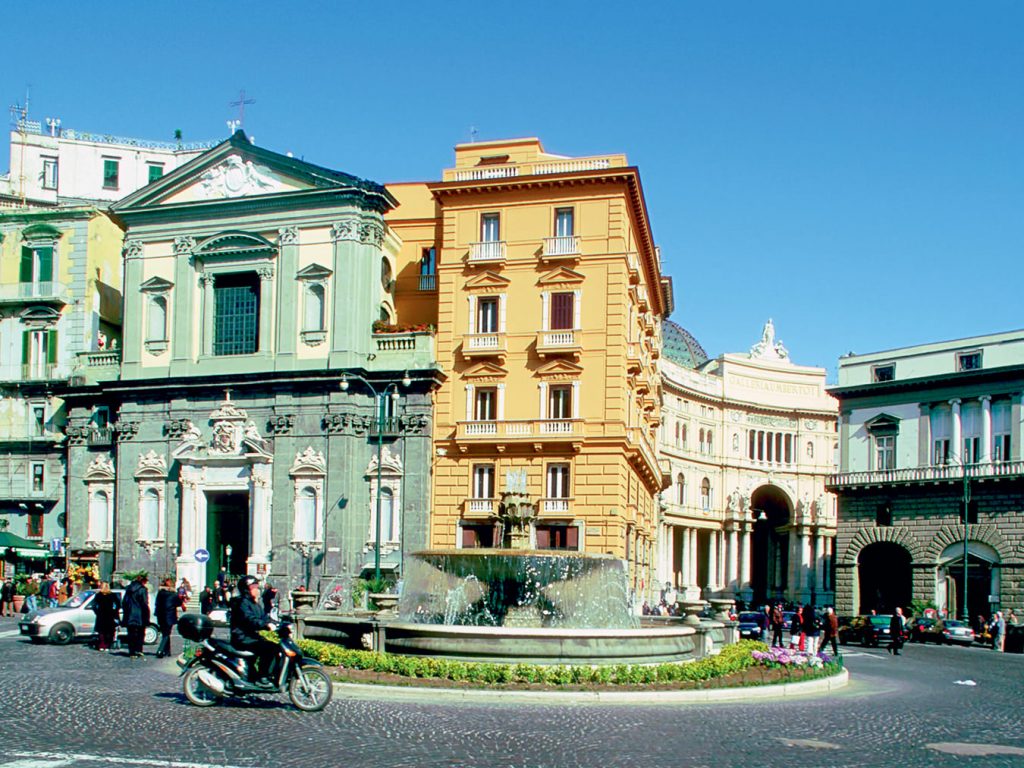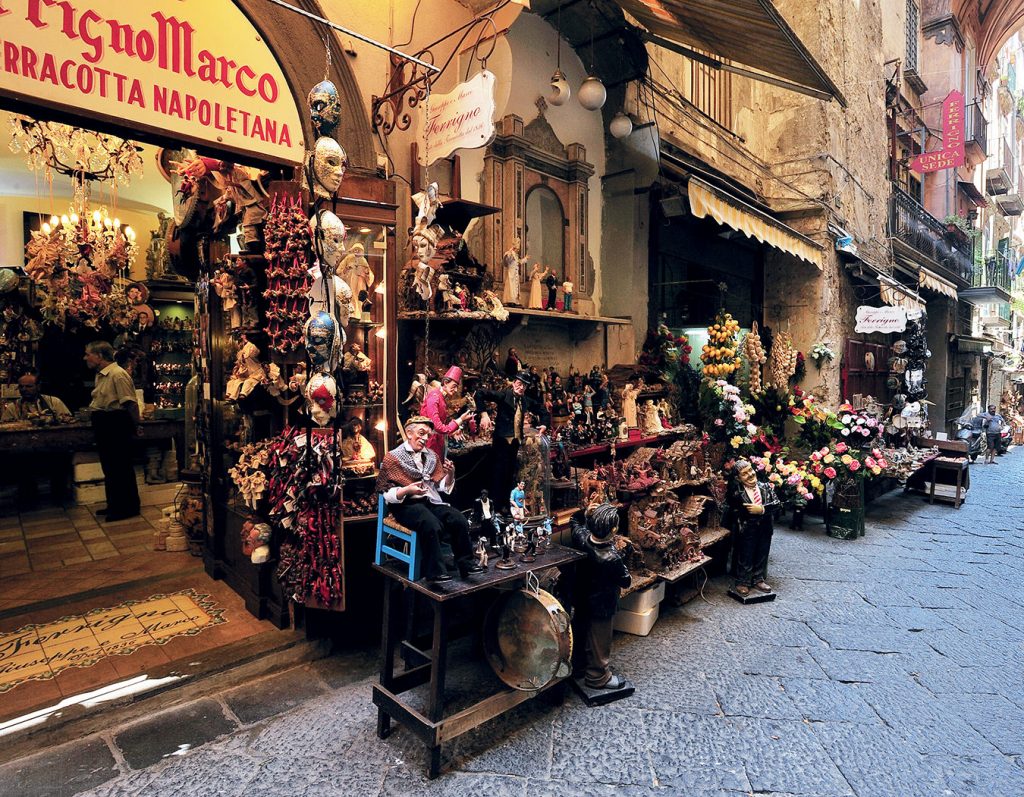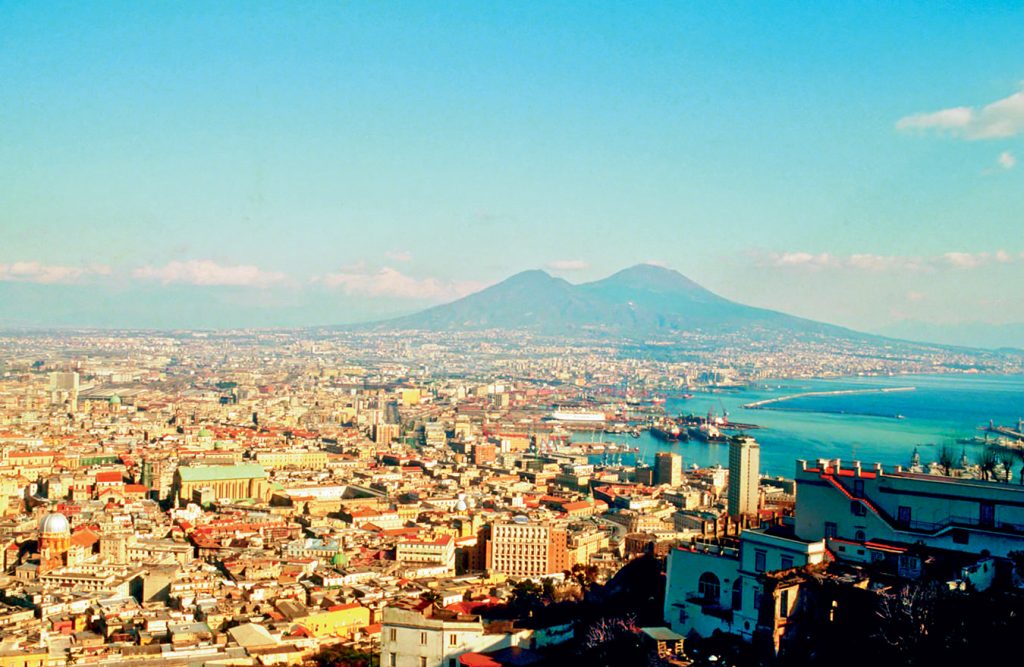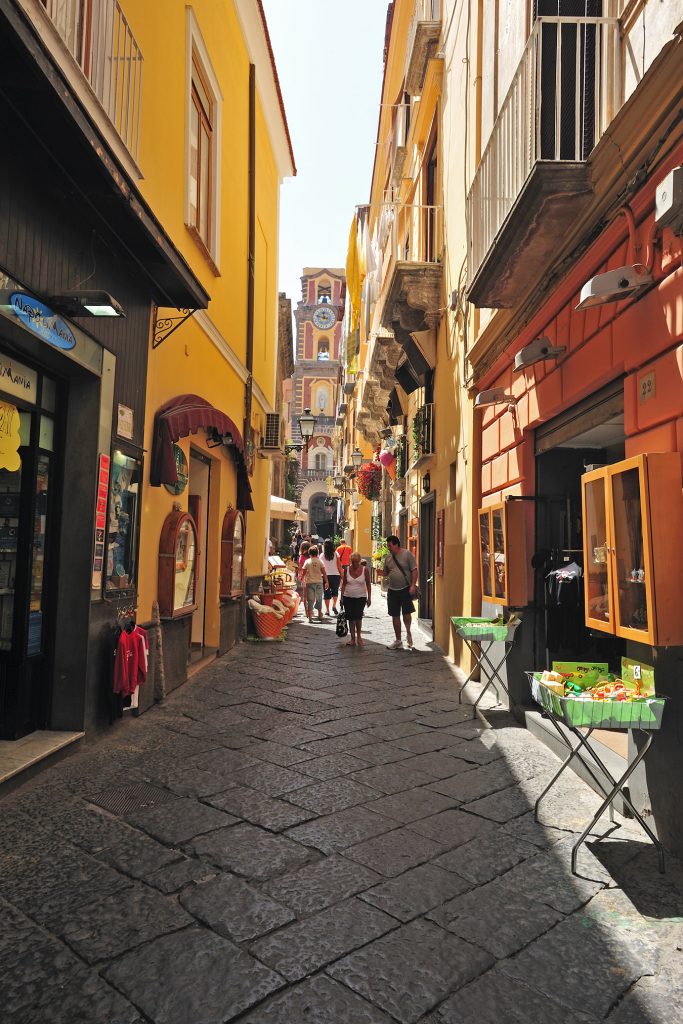In all the claptrap of experiential travel, it seems the best is overlooked. Tourists of all stripes, all persuasions, flock to Paris, London, Rome, Beijing, Hong Kong. Not that there’s anything wrong with that. The list, the beat, as Sonny and Cher have it, goes on. But seldom does the teeming, rich, almost overexpressed city of Naples come into the discussion. And that is a shame. The city—not, we remind you, the province—of Naples is a mystifying, entrancing, and overall hypnotic place to spend a few days. Think of all the unintentionally droll movies about life in a dramatic yet laconic Italian or French town. Then forget all that, and think about getting a life. Naples will do that for you. It is a city of narrow streets, steep, winding hills (Bullitt could never have been shot here), and above all a history it wears on every brick, every cobblestone. Naples is history in medias res, a place founded by the Greeks in the Bronze Age, nearly 2,000 years BC. It is one of the world’s oldest continuously inhabited cities, and all that history is palpable to this day.
There are splendid views from some of the balconies overlooking the city and out toward the seemingly timid, benign Mount Vesuvius, though looks in this case are clearly deceiving, since that volcano has erupted dozens of times, churning out exponentially more heat that the Hiroshima bomb. But Vesuvius aside, this is a city alive every hour of the day and night, redolent with churches and pizzerias, crowded—and that is exactly the right word—with people going about their daily turn without any noticeable disdain for the turista.
Take a sojourn into some of the little neighbourhoods, perhaps in and around ancient Naples. The byways are full of people, the cobblestones are uneven, the heat can put you on your back if you are not prepared, and laundry done that morning by hand is now hanging from every second balcony rail. But you can turn a corner, and there is Piazza del Gesù, with two churches casting their formidable and cooling shadows. Naples is in fact a city of churches, with well over 400 of them. (Some visitors spend virtually their entire time on church tours.)
The churches do convey a vivid sense of the history of this place, but they are not alone in that. It is possible to visit what is called Napoli Sotterranea, or “Underground Naples”, in which you can see how daily life unfolded five centuries ago. An extensive excavation project is still underway, enabling an up-close-and-personal look at living quarters, kitchens, furniture even.
Back up on the streets, there are numerous pasta stalls, boasting treasures such as lingua di suocera (“tongue of the mother-in-law”), multicoloured, inch-thick ribbons that would be an ideal accompaniment to almost any version of the famous Neapolitan ragù.
Food is of course a passion here. It is Italy, after all. But in Naples, origin of the margarita pizza, in which specific flours and a wood-burning pizza oven are mandatory and not in any way optional, there is a wild abundance of fantastic flavours, restaurants seemingly on every block, all boasting their own versions of that original pizza, alongside other local specialties such as buffalo mozzarella with large red tomatoes and copious amounts of basil, black pepper, and olive oil.
Tour guides and their assigned followers are ubiquitous, here proclaiming, “In those days, it finally was legal that the daughter of a freed man could inherit his estate,” there proclaiming, “Julius Caesar created the cult of the emperor.” Nods and scratching heads all around. But it exemplifies the fact that in Naples, history is in the very air you breathe, the smells, the tastes.
It bears repeating that Vesuvius is close by, perhaps 60 minutes’ drive away. You can see the famous site of the city of Pompeii, but you can also head a little further down, to the coast, where the town of Herculaneum was also buried in that outburst of AD 79. Here, the lava arrived at such speed and in such volume that much of the village was in effect preserved under the molten ash. An elaborate, intricate excavation is taking place, and there are, just as in Underground Naples, highly detailed, extremely well-preserved mosaics, terracotta tiles, and engraved artworks on the walls, with aqueducts and the village square and chapel all marvelously preserved.
On to the well-known resort town of Sorrento, another two hours away, with the drive featuring plenty of hair-raising curves with sheer cliffsides along the way. Sorrento is picturesque beyond any capacity to explain it, and the centre of town is, during high season, bursting with energy and activity, most of focused on the myriad of bars, cafés, gelaterias, and restaurants. It seems like a whole different universe from the urban rush of Naples.
You can spend an entire day at the Herculaneum site, part of the time watching the many groups of schoolchildren, all with their tiny, yellow safety hats on, bobbing from alley to alley as they assimilate the magnitude of that catastrophe back in AD 79, made vividly real in their imaginations. And then you can return to the city to make a few stops. Back in that urban rush sit delectable pizzas and some of the best espresso in all of Italy, a little more acidic and robust than a typical Northern espresso. The tricoloured Neapolitan gelato is clearly a point of pride, and a trusted way of parting tourists from a bit of cash, but the stuff is tremendously good. Perhaps stop in to the Sansevero Chapel to see the stunning work by 18th century sculptor Giuseppe Sanmartino, called The Veiled Christ, one of the many iconic artworks to be seen in Naples. Through it all, the city announces itself: here to stay.
All photos courtesy of Fototeca ENIT.














